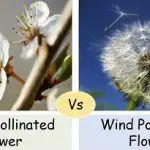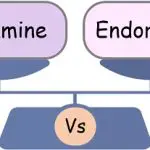We can categorize anaesthesia into two prominent categories- local and general, based on the site and potential of action. Local anaesthesia is preferred during minor surgeries. Doctors use them when they want to numb only a particular region of your body. Even after injecting them, the patient remains conscious of his situation and can feel the other emotions. In … [Read more...] about Difference Between Local and General Anaesthesia
Difference Between Obesity and Morbid Obesity
Obesity and morbid obesity are the two health conditions where the body starts depositing excess fat. But after comparing these two conditions, you can see that they vary a lot. We can differentiate them based on many parameters like body mass index (BMI), death rate, ways of treatment etc. For an obese person, the BMI index ranges from 30 to 39. But the person suffering … [Read more...] about Difference Between Obesity and Morbid Obesity
Difference Between Insect Pollinated and Wind Pollinated Flowers
The insect-pollinated and wind pollinated flowers highly vary in their structural appearance. The flowers are large-sized for insect pollination with vibrant bright colour petals. These flowers possess many nectar glands that continuously release the nectar. For this reason, they have a very sweet and fragrant smell. These all factors make the flower attractive for the … [Read more...] about Difference Between Insect Pollinated and Wind Pollinated Flowers
Difference Between Pug and Bulldog
Pug and bulldog are adorable, cute, funny faces with wrinkly skin. You might have seen many trending videos featuring these two lovely dog breeds. The pugs originated in china for the first time. Well known for their wrinkled cute smashed face with Q-tail, the pugs are irresistible and a playful dog breed. Pugs have small sizes and large, round heads. Their eyes are large … [Read more...] about Difference Between Pug and Bulldog
Difference Between Dopamine and Endorphins
To understand the importance of dopamine and endorphins, you must first know what are they! Our body is driven by certain chemicals that balance and manipulate the emotions we feel. Happiness, sorrow, pleasure, affection, etc. are the feelings that arise from these chemical messengers. Dopamine and endorphins are two of those same chemicals responsible for happiness and … [Read more...] about Difference Between Dopamine and Endorphins





